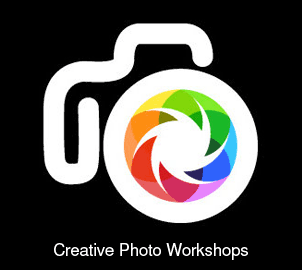|
 Digital Camera Review by: Katrina Putker Digital Camera Review by: Katrina Putker
Sony claim to have cemented their place in the digital SLR market with the Alpha 900 and while they’ve got a long way to go before they take any serious stranglehold on the monopoly that in reality belongs to Canon and Nikon, it is fair to say that Sony have finally arrived with some serious ammunition on the back of the A900.
First thing to note is the whopping 24.6-megapixels combined with a full frame CMOS sensor that truly offers outstanding resolution (given quality lenses are used) that betters the A900’s equivalent models in both the Canon and Nikon range.
In terms of design, the A900 is almost identical to its predecessor the A700. It’s slightly larger, has four less options on the mode dial and a few additional buttons on the body, but otherwise is exactly the same.
The previously well-received moulded handgrip is incorporated to help ensure the user has solid control of the unit at all times and the thumb grip area has been enhanced with a rubbery material to provide greater traction and stabilisation for the controlling thumb.
With the more expensive glass lenses attached the A900 can feel somewhat off-balance in hand, which can make general handling a bit of a fight against gravity and the strength of your own wrist, but obviously this may alter in severity from person to person.
It’s unlikely you could wear the A900 unit, combined with a professional glass-based lens, around your neck or handhold it for extended periods of time without becoming relatively fatigued.
With that in mind, it’s fair to say that this unit is not at all for the faint-hearted.
Indeed, the Alpha 900 is undoubtedly playing it with current market big boys: Nikon and Canon, and potential buyers would most likely be serious enthusiasts or professionals already equipped with the ability and endurance to handle a camera of this size and quality and therefore get the most out of it.
Despite the A900 body expanding in size away from the A700, the dimension of the LCD screen has remained the same at 3-inches and 921,000 dots.
While proportionally, this screen works well on the A700, it does become partially swallowed on the A900 where it is forced to compete for attention against the generously-sized optical viewfinder (complete with eye-start sensor) and the various other buttons and dials on the body.
The A900 unit was tested with the F2.8 24-70mm Sony lens, which retails for upwards of $2,000 on its own and combines with the Alpha body to produce sharp, vibrant, high quality results if not in a slightly weighty package at over 1.5kg (895g with body and battery only).
Strangely, there is no pop-up flash on the A900, which may well deter a portion of potential buyers because they are either forced to spend more money on an external flash unit or otherwise, just go without.
In mid-to-low light conditions, the auto function on the A900 tends to push the ISO right up to anywhere between 800 and 6400 and resultantly produces images with higher levels of noise, which to be frank, can degrade the quality of images dramatically.
With this in mind, it is strongly advised that users know how to shoot manually and therefore have independent control over ISO at all times, amongst other settings.
Overall, noise is probably one of the A900’s weakest areas considering that anything beyond 400 means a visible decline in image quality as a result of obvious noise.
While technically, this unit does push out to an ISO of 6400 (and down to 100) images shot at this setting are not passing what would generally be considered professional standards.
The A900 doesn’t appear to handle scenes with high dynamic range as well as it possibly could in automatic mode with regular evidence of blown out highlights and solid blacks with little to no detail on trial shots.
These situations are when Sony’s dynamic range optimiser comes in handy and proves to be especially effective particularly when the advanced setting is used.
So, if users can identify the high dynamic scene in front of them and utilise the A900’s functions accordingly, any blowouts or solid shadow areas can be easily avoided.
Fortunately a second LCD panel has been added to the top of the A900 (although it is on the small side of things), which at a glance offers users a preview of the battery life and the number of available shots along with current shutter and aperture settings.
Other settings changed via the dedicated buttons on the body e.g. white balance, ISO, exposure compensation etc. are also displayed momentarily when changed before the default settings reappear.
The A900’s shutter mechanism is considerably clunky and heavy sounding meaning subtlety is certainly not one of the cameras stronger points.
Particularly when shooting people or animals, this can become an issue as your subjects are likely to immediately become aware of your presence if they weren’t already or, if they were, they may be regularly distracted by the noise and as a result, be unable to help produce as natural a result as possible.
The A900 internal menu system is simply and effectively designed with commonly recognised symbols and clear descriptions used throughout.
Six preset creative styles are readily available to help users quickly and easily achieve premium results for a variety of given scenes/ themes including: standard, vivid, neutral, portrait, landscape, and black and white.
It’s somewhat of a mystery why the potential 12-option mode dial only utilises a possible eight: auto, program, manual, shutter priority, aperture priority and three customisable memory recall modes and doesn’t include scene modes such as sport, landscape, portrait and night scene as well.
Of course, the customisable modes can be manually set to best deal with sport and landscape scenes etc. but with empty spaces on the dial to fill, one wonders why wouldn’t Sony include any presets for users to employ?
A body integrated (sensor based) image stabilisation system Sony call ‘Super SteadyShot’ works in the A900 by compensating the detected camera movement with slight movement of the sensor itself.
When switched on, the SteadyShot technology proves to work very well in decreasing blurriness in images generally resulting from hand-holding at slower shutter speeds.
It also means more expensive dedicated stabilised lenses needn’t be purchased although the better quality Sony lenses are on the upper end of the price spectrum as it is.
The seemingly insignificant AF/MF button next to the shutter speed dial proves quite hand for quickly switching the camera between auto and manual focus without having to pull the camera away from your eye and/or fiddle around with buttons and switches on the front of the camera body.
Of course, this option is still available on the A900 but having the additional AF/MF button so easily accessible can save valuable time when needing to focus quickly and capture the shot.
The placement of the on/off switch on the body’s left hand side does go against general camera convention (both DSLR and compact) and as a result, can be difficult to adjust to especially considering that in most cases, the user’s dominant hand will be their right. In the grand scheme of things however, this is a relatively small gripe.
While it is often easier to talk about the bad than good, overall the Sony A900 is undoubtedly a solid performer in the DSLR arena: it’s resolution is superb, it performs quickly and efficiently across the board (thanks in part to its dual BIONZ image processors), and at lower ISO speeds is capable of producing high quality images that are detailed, sharp and fairly accurately coloured.
Certainly one to consider if it’s within your desired price range.
[ Tested with the Sony 24-70mm F2.8 ZA SSM lens ]
| Appearance rating |
3.5 stars |
| Functionality rating |
4 stars |
Image quality
|
4.5 stars |
Lens quality
|
4.5 stars |
| View finder / LCD screen |
4.5 stars |
| Value for money |
4.5 stars |
| RRP (AUD) |
RRP $4,499 (body only)
|
 |
|
| Effective Pixels |
24.6 Million mega pixels |
Image Sensor
|
BIONZ™ Engine : Dual BIONZ™ processor |
| Image Sizes |
3 Sizes |
| Resolution Settings (Aspect ratio 3:2) |
L (24M): 6048 x 4032; M (13M): 4400 x 2936; S (6.1M): 3024 x 2016 |
| Resolution Settings (Aspect ratio 16:9) |
L (21M): 6048 x 3408; M size: 4400 x 2472 (11M); S (5.2M): 3024 x 1704 |
| Manual Focus |
Yes |
| Auto Focus |
Yes |
| Aperture Priority |
Yes |
| Shutter Priority |
Yes |
| Shutter Speeds |
1/8000 sec. - 30 sec., bulb |
Exposure Metering System
|
Direct TTL metering (multi segments, center-weighted metering, spot metering) |
| Exposure Modes |
Program AE (Auto mode / P-Mode, with program shift), aperture-priority AE (A-Mode), shutter-priority AE (S-Mode), manual (M-Mode) |
| ISO |
Auto, 100, 200, 400, 800, 1600, (up to 6400) |
| LCD Monitor |
Yes |
| LCD Size |
3.0-inch (100% field of view), 921,600-dot, Xtra Fine LCD
|
| Viewfinder |
Yes |
| Hot Shoe |
Yes |
| White Balance |
Automatic, Preset (Daylight, Shade, Cloudy, Tungsten light, Fluorescent light, Flash), Colour Temperature (2500 - 9900k with 19-step Magenta / Green compensation), custom |
| Self Timer |
10 sec., 2 sec. (with mirror up) |
| HD Movie Option |
No |
| Movie Sizes |
|
| Video Out |
Yes |
| Storage Type |
Memory Stick Duo, Memory Stick PRO Duo, Memory Stick PRO-HG Duo, Compact Flash (Type I & II, UDMA Mode 5 compliant), Microdrive |
| Still Image Format/s |
JPEG (DCF 2.0 and Exif 2.21 compliant, DPOF supported), RAW (Sony ARW 2.0 format), RAW+JPEG |
| Movie Image Format/s |
|
| Audio Format/s |
|
| Connectivity |
USB2.0 Hi-Speed (mass storage mode / PTP mode / multi LUN) |
| Power Source |
AC adaptor - AV-VQ900AM |
| Battery Options |
NP-FM500H |
Battery Life
|
|
| Dimensions |
(W) 156.3 x (H) 116.9 x (D) 81.9mm |
| Weight |
850g |
|













